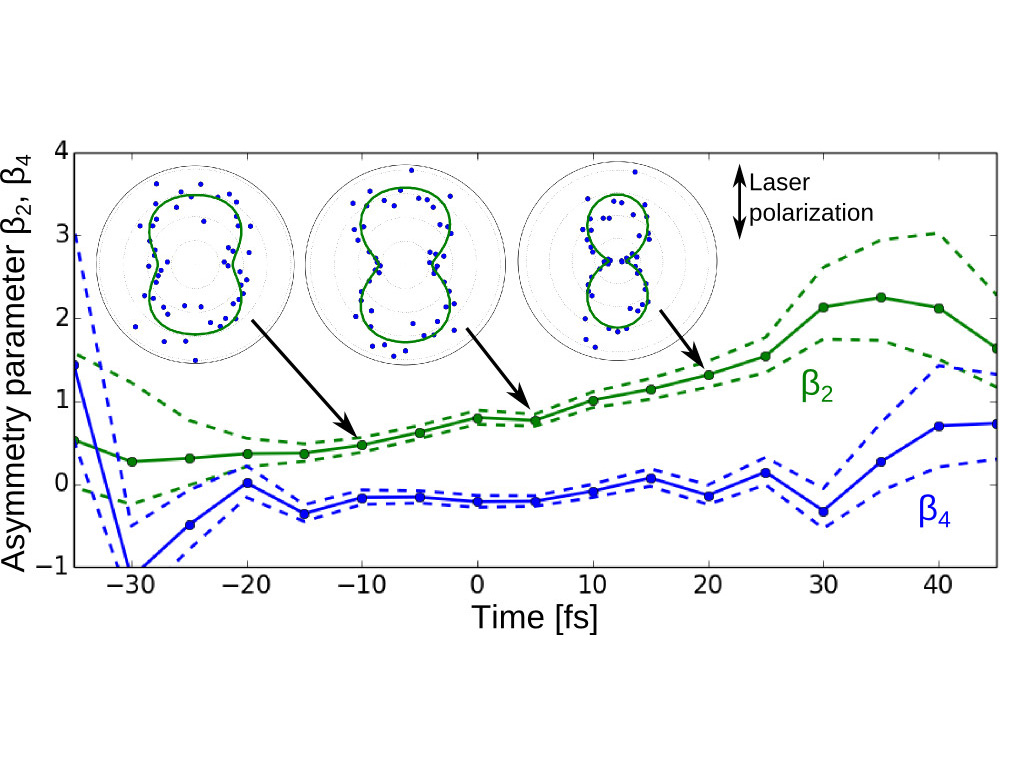Using
time-, energy- and angular-resolved photoelectron imaging a team of researchers
from the Max Born Institute in Berlin, in collaboration with colleagues from
Milan and Padova, has been able to make snapshots of coupled Rydberg orbitals
evolving in time during an ultrafast autoionization process.
Electronic
autoionization is a process in which multiple electrons in an excited atom or
molecule rearrange in order to "kick out" one of them.
Notwithstanding its long research history, the theoretical description of this
phenomenon still meets with significant challenges, especially in cases where
several electronic autoionizing resonances overlap. These challenges are
fundamental, since most of the theories approach the inherently time-dependent
autoionization process from an energy-domain perspective, thanks to the
prevailing experimental information that is collected in the energy domain.
However, recent advances in ultrafast laser spectroscopy and, especially, the
generation of ultrashort XUV pulses, allowed the researchers to look at
autoionization in nitrogen molecules on its natural time scale.
In a recent
publication (M. Eckstein et al, Phys. Rev. Lett. 116, 163003 (2016)), the
experimental team has used a newly constructed XUV time delay compensating
monochromator beamline to excite one of the complex autoionizing resonances in
a nitrogen molecule. In the femtosecond pump-probe experiment, a second
time-delayed infrared (IR) laser pulse was able remove the electron from the
excited orbitals before the autoionization had a chance to take place, i.e. at
a timescale of less than 15 fs. The resulting photoelectrons were detected
using a Velocity Map Imaging spectrometer, which delivers both energy- and
angular-resolved distributions of photoelectrons. The analysis of the angular
distributions, which gives direct information about the shape of the involved
electronic orbitals, showed that the photoelectron emission angles change
within the lifetime of the resonance (see. Fig. 1). Immediately after the excitation,
the emission is more or less isotropic, i.e. the electrons are emitted with
equal probability in all directions. However, with increasing pump-probe time
delay, the electrons more and more tend to fly out in the direction of the
laser light polarization. This observation can only be understood, if one
assumes that two different electronic states with substantially different
lifetimes are simultaneously probed by the IR pulse. The existence of these two
states was indeed predicted by theory more than 30 years ago. The present
experiment gives the first confirmation of this old prediction.
The two
overlapping electronic states with long and short lifetimes observed by the
team suggest a role for the phenomenon of interference stabilization,
previously suggested in the field of laser-dressed atoms and in atomic Rydberg
physics. In the framework of this theory two overlapping resonances influence
each other in such way that one of the two becomes stabilized at the expense of
the other. Quantum interferences lead to a counterintuitive effect: the
stronger the resonances interact, the more one of them is stabilized. The
present work draws parallels between these interference phenomena in
laser-dressed atoms and in molecular autoionization. Further experimental and
theoretical research will shed light on how general this phenomenon is and will
help to achieve a new level of understanding of autoionization dynamics.
Original
Publication: Physical Review Letters 116, 163003
Direct
Imaging of Transient Fano Resonances in N2 Using Time-, Energy-, and
Angular-Resolved Photoelectron Spectroscopy
Full
Citation:
Martin
Eckstein, Chung-Hsin Yang, Fabio Frassetto, Luca Poletto, Giuseppe Sansone,
Marc J. J. Vrakking, Oleg Kornilov
"Direct
Imaging of Transient Fano Resonances in N2 Using Time-, Energy-, and
Angular-Resolved Photoelectron Spectroscopy"
DOI:
10.1103/PhysRevLett.116.163003
Capture:
Angular distributions of photoelectrons emitted upon
ionization of an excited nitrogen molecule by a weak IR pulse. The insets show
individual angular distributions for time-delays marked by black arrows. The
green and blue curves quantify the angular distributions in terms of angular
asymmetry parameters - the relative weights of the second and forth Legendre
polynomials in the angle distributions. Diagram: MBI
Contact
Max-Born-Institut |


